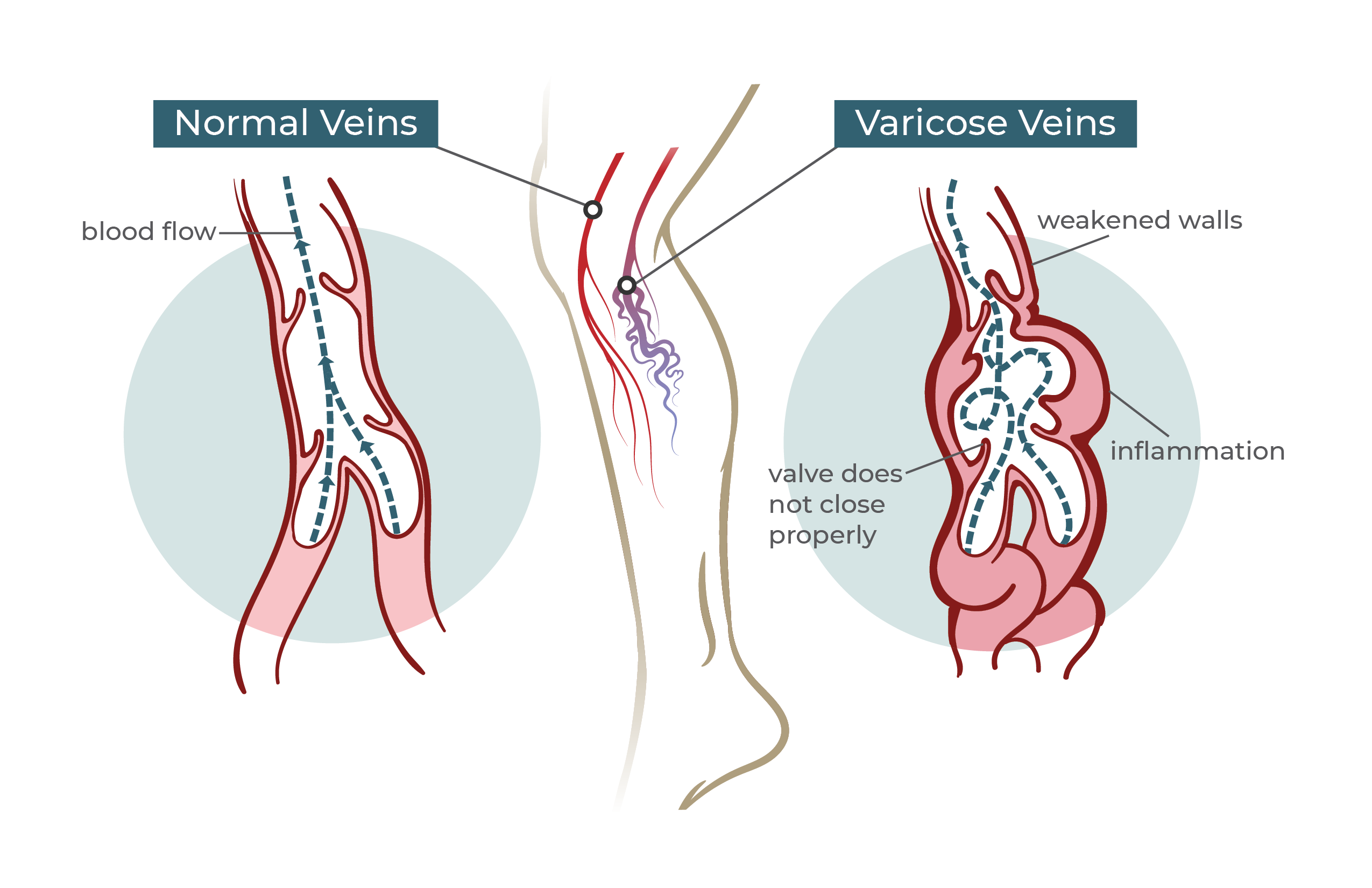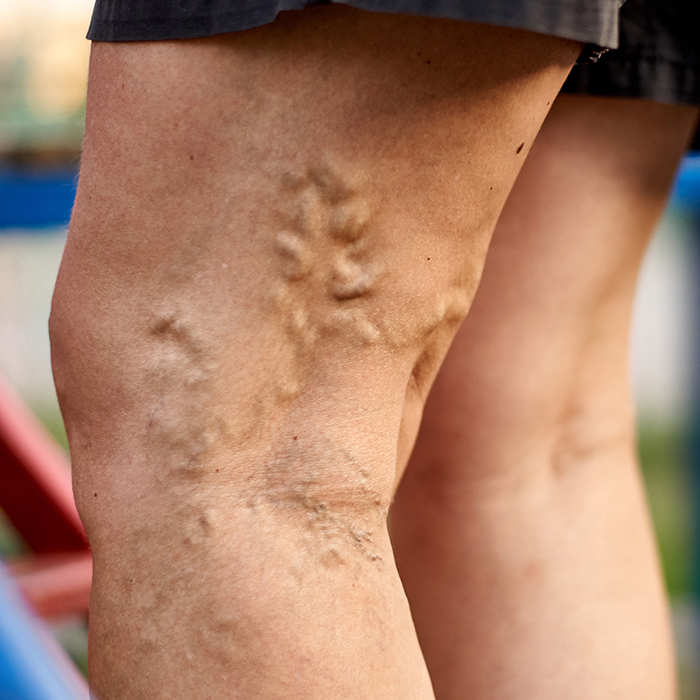Vein Conditions and Treatment
Vein function
Veins carry blood back to the heart. To prevent blood from flowing backward, they contain a one-way valve that closes once the blood passes through it. If this valve weakens or becomes damaged, the blood may struggle to flow in the correct direction, and it can begin to pool inside the vein. Over time, this can cause a bulge in the vein that branches out, resulting in spider veins or varicose veins.

Vein Conditions
CHRONIC VENOUS INSUFFICIENCY (CVI):
Venous insufficiency can occur at any time for both men and women. Some people are initially concerned with the unsightly appearance of spider veins or varicose veins and others may experience leg pain or discomfort as a result of chronic venous insufficiency. Please keep in mind, it’s important to see a vein doctor for an accurate assessment.
CVI is a condition that ranges from tiny spider veins, varicose veins, leg swelling, stasis dermatitis and can progress to open venous ulceration. Our emphasis in treating patients with CVI is to effectively treat current problems while emphasizing prevention to what may occur in the future. Our treatments improve the appearance, reduce symptoms and facilitate wound healing along the entire spectrum of the condition. Lifelong medical treatment of CVI reduces recurrence and progressing to more serious manifestations.

What are Spider Veins?
Spider veins are small, damaged veins that can appear in the skin anywhere but by far are most common in the legs. They are usually not painful or harmful, but some people may wish to treat them for cosmetic reasons.

What are Varicose Veins?
As part of the circulatory process, veins contain tiny valves that open and close to help move blood upwards, towards the heart. When the valves become damaged or stop working, blood flow becomes inefficient. When veins don’t function properly the pressure within the vein increases. The increased pressure stretches and enlarges the vein, making it varicose. Varicose veins are larger and deeper than spider veins. They may also appear lumpy or twisted and are usually flesh-colored or light blue. Varicose veins become problematic when they cause swelling or discomfort.
Common Symptoms of Varicose Veins
The best way to find out if the symptoms you are experiencing are a result of venous insufficiency is to seek a professional’s help to make a proper diagnosis.
-
-
- Veins that appear to be twisted or bulging, and may also be dark purple or blue
- An achy or heavy feeling in the legs
- Pain, swelling, itching, burning or cramping in the legs
- Bleeding veins, ulcers or skin inflammation
- Restless Leg Syndrome
-
If you’ve been diagnosed with varicose veins there are several lifestyle changes you can make to help alleviate your symptoms. For example, make sure you exercise regularly, lose weight if needed (or maintain a healthy weight), and avoid standing or sitting for extensive periods of time.
Other Conditions
VENOUS THROMBOSIS:
Venous Thrombosis (blood clots) can form within the superficial or deep venous system anywhere in the body. Superficial Venous Thrombosis (SVT) is usually visibly evident and can often be diagnosed by clinical exam. SVT is rarely dangerous and can often be treated with over-the-counter medications. Deep Venous Thrombosis (DVT) occurs in veins that are encased by muscles and therefore not visible on examination. DVT usually requires diagnostic testing and more significant medical treatment. DVT can cause Chronic Venous Insufficiency and carries a risk of Pulmonary Embolism.
Treatments
Sclerotherapy
Sclerotherapy is used to treat spider veins and varicose veins that occur most commonly on the legs. The process consists of a chemical solution, or sclerosant, that is injected into the vein through a tiny needle. The solution irritates the damaged vein, causing it to scar and no longer carry blood. The body will then redirect blood flow to other healthy veins.
Compression stockings or socks
Wearing compression stockings or socks reduces negative pressure within the veins in the lower legs. This pressure will improve blood flow and help to prevent further spider or varicose veins. Compression stockings may also help relieve leg swelling and will lower the risk of blood clots in the legs.
Familial Tendency
Both Chronic Venous Insufficiency and Venous Thrombosis have a familial tendency. Patients are taught this in order to help future generations avoid Venous Disease.
Risk Factor Modification
In addition to familial tendency, personal decisions can cause an increased likelihood of CVI and Venous Thrombosis. Patients are taught what behaviors increase their likelihood of both conditions and what remedies can reduce that risk.
